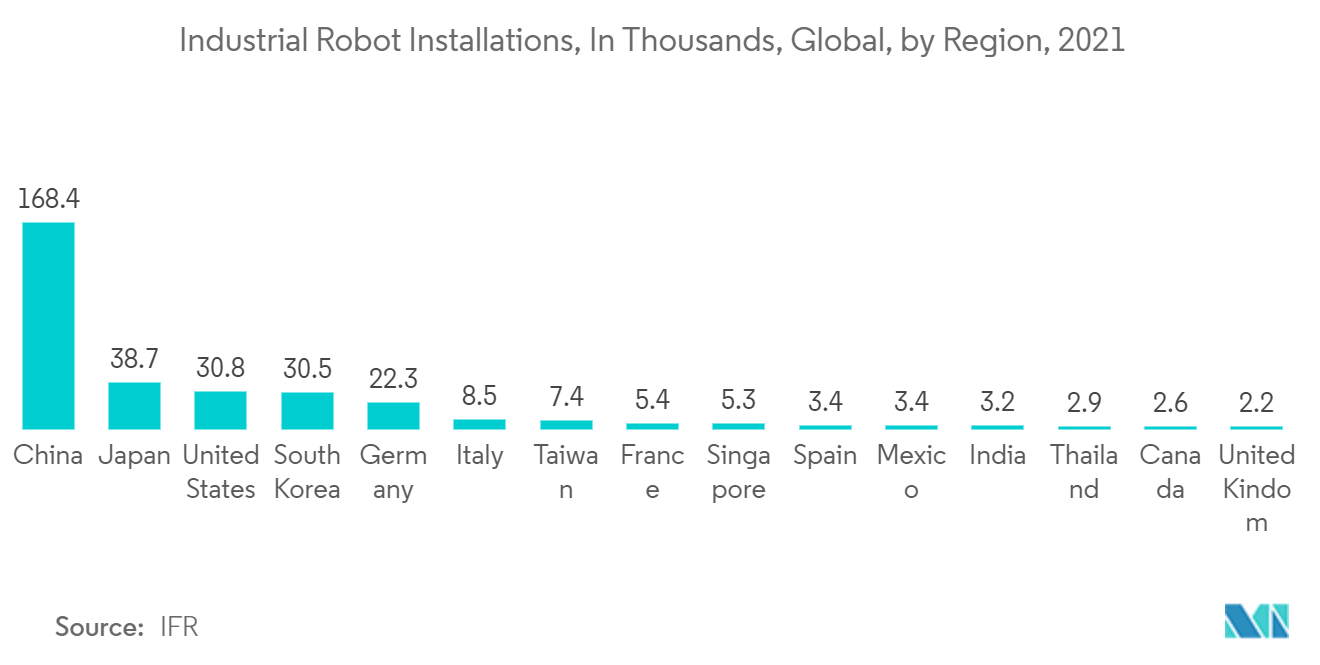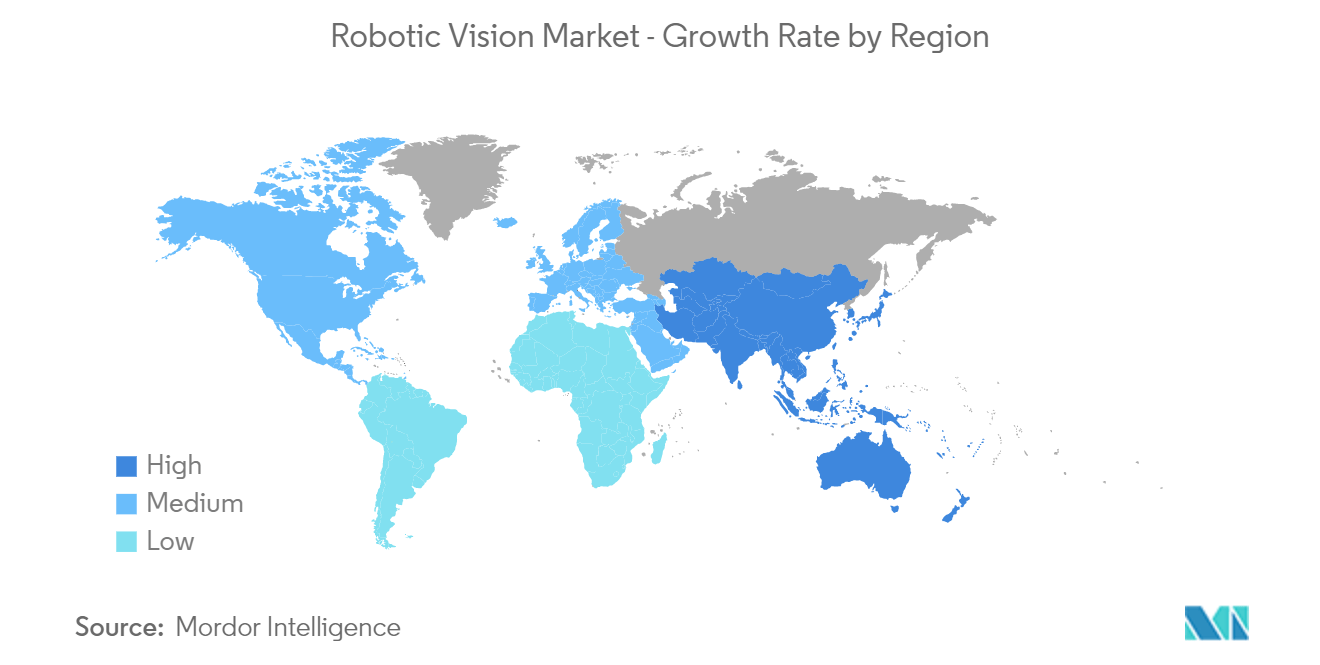Market Trends of Robotic Vision Industry
This section covers the major market trends shaping the Robotic Vision Market according to our research experts:
Growing Demand from End-User Segments like Automotive Industry Drives the Market Growth
- To address quality issues, Automotive manufacturers are increasingly investing in vision systems. The technology is increasingly being used by automakers and parts suppliers for various applications, including adhesive dispensing, bin picking, error-proofing, inline welding analysis, material handling, robotic guidance, surface inspection, and traceability. Growing demand for customization, increasing labor shortages, and cost pressures are some significant drivers of vision systems used in the auto industry.
- Vision-guided robots are projected to revolutionize the electronics, automotive, and food processing industries. Due to the tremendous technology demand for applications such as arc welding, cutting, and palletizing, these industries are dominated by 3D vision-guided technology.
- Advanced machine vision technology plays a significant role in the daily operation of various global automotive plants. Ford Motor Co.'s Van Dyke transmission plant, for instance, uses vision-guided robots to ensure the high-quality assembly of critical components like gears and clutches. The plant has deployed over 500 inline machine vision applications for error-proofing, gauging, and complexity issues.
- With the growth of the ADAS system in Automotives, the requirement of components like camera-led lighting, Lidar, and V2X, among others, would play a crucial role shortly for automation and intelligence. Further, according to Neuromation, traffic accidents account for 2.2% of global deaths. With 2D and 3D machine vision and intelligent transportation systems (ITS), drivers are provided with a safety net. These technologies make it possible to mitigate human error in the auto industry, assisting drivers at the wheel with tools and features that keep them from committing severe mistakes and accidents.
- Because of their noncontact inspection, high repeatability, and minimal cost, robotic vision systems are becoming more popular for quality control in various sectors. Traditional methods of product quality control rely entirely on human inspection. On the other hand, human inspection performance is projected to decline over a shift of work owing to weariness and repetition. Minor faults may go unnoticed, resulting in non-trivial errors. Technological breakthroughs are transferring the time-consuming inspection labor from humans to machine automation. Significant advances in hardware and software have already shifted most of the quality control inspection labor to machines in various regions of the globe. According to IFR, With approximately 168 thousand new industrial robot installations in China, it had set up the most robotics-worldwide in the previous year.

North America is Expected to become the Fastest Growing Market
- In robotics adoption, North America is one of the significant inventors and pioneers and one of the world's largest markets. The rising deployment of robotics across various sectors is the key driver of the market's growth.
- According to the International Federation of Robotics, North American industrial robot deployments are predicted to reach 69,000 annually by the current year. According to Advancing Automation, the number of robots sold last year was estimated to rise by 28% over before previous year. As more sectors resorted to automation to enhance productivity and reduce persistent labor shortages, record robot sales were recorded in the fourth quarter of the last year (up by 9% from the fourth quarter of before earlier year), demonstrating strong momentum already gained in the previous few months.
- Industrial robots are critical in industrial automation, with various robots managing many vital functions in multiple industries. Electronics, e-commerce, and automotive industries, among others, are growing in tandem with economic expansion in many countries in this region. Product manufacturers are rapidly employing robots to automate repetitive procedures in response to rising demand across economies.
- Machine vision systems would be produced more frequently due to government efforts such as the Advanced Manufacturing Partnership, which aims to encourage businesses, universities, and the federal government to invest in future automation technology.
- According to the MAPI (Manufacturers Alliance for Productivity and Innovation), industrial production in the United States was estimated to rise by 2.8% by the earlier year, boosting the country's use of robotic vision technologies.

